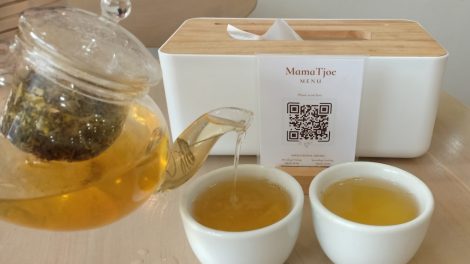Taoist Qigong is a holistic practice that intertwines physical movement, breath control, and meditation to cultivate and balance the vital energy known as “Qi” or “Chi.” As I delve into this ancient art, I find that it is not merely a form of exercise but a comprehensive system aimed at enhancing physical health, emotional well-being, and spiritual growth. The term “Qigong” itself translates to “energy work,” which encapsulates the essence of this practice. Through a series of gentle movements and focused breathing techniques, I can tap into the natural flow of energy within my body, promoting harmony and balance.
In my exploration of Taoist Qigong, I have come to appreciate its emphasis on the interconnectedness of body, mind, and spirit. This practice encourages me to cultivate awareness of my internal state while fostering a deep connection with the world around me. By engaging in Qigong, I am not only working on my physical fitness but also nurturing my mental clarity and emotional stability.
The rhythmic movements and meditative aspects of Qigong create a sanctuary where I can retreat from the chaos of daily life, allowing me to reconnect with my inner self.
Key Takeaways
- Taoist Qigong is a practice that combines movement, meditation, and breathwork to cultivate and balance the body’s energy.
- The history and philosophy of Taoist Qigong date back thousands of years and are rooted in the principles of Taoism, including harmony with nature and the cultivation of inner energy.
- Practicing Taoist Qigong can lead to a wide range of benefits, including improved physical health, mental clarity, emotional balance, and spiritual growth.
- Techniques and practices of Taoist Qigong include gentle movements, breath control, visualization, and meditation to promote the flow of energy throughout the body.
- Energy cultivation is a central focus of Taoist Qigong, with the goal of balancing and harmonizing the body’s energy to promote vitality and longevity.
The History and Philosophy of Taoist Qigong
The roots of Taoist Qigong can be traced back thousands of years to ancient China, where it emerged as part of the broader Taoist philosophy. As I study its history, I discover that Qigong was influenced by various schools of thought, including Confucianism and Buddhism, but it is primarily grounded in the principles of Taoism. The Taoist worldview emphasizes living in harmony with the Tao, or the fundamental nature of the universe.
This philosophy resonates deeply with me, as it encourages a lifestyle that values simplicity, humility, and balance. Throughout history, Qigong has evolved through the contributions of various masters and practitioners who have refined its techniques and principles. I find it fascinating that what began as a spiritual practice aimed at achieving enlightenment has transformed into a widely recognized method for promoting health and well-being.
The teachings of legendary figures such as Laozi and Zhuangzi have shaped the philosophical underpinnings of Qigong, emphasizing the importance of aligning oneself with the natural rhythms of life. This historical context enriches my understanding of Qigong as not just a physical practice but a profound journey toward self-discovery and enlightenment.
The Benefits of Practicing Taoist Qigong

Engaging in Taoist Qigong offers a myriad of benefits that extend beyond mere physical fitness. Personally, I have experienced significant improvements in my overall well-being since incorporating this practice into my routine. One of the most notable advantages is the reduction of stress and anxiety.
The meditative aspects of Qigong allow me to cultivate a sense of calmness and tranquility, helping me navigate the challenges of daily life with greater ease. As I focus on my breath and movements, I find that my mind becomes clearer, enabling me to approach situations with a more balanced perspective. Moreover, the physical benefits of Qigong are equally impressive.
Regular practice has enhanced my flexibility, strength, and balance. The gentle movements promote circulation and help release tension stored in my muscles. I have noticed an increase in my energy levels, which has positively impacted my productivity and overall vitality.
Additionally, Qigong has been shown to support immune function and improve cardiovascular health, making it an invaluable tool for maintaining physical wellness as I age.
Techniques and Practices of Taoist Qigong
The techniques and practices of Taoist Qigong are diverse and can be tailored to suit individual needs and preferences. As I explore various forms of Qigong, I discover that they often include slow, flowing movements combined with deep breathing exercises. One popular practice is “Eight Pieces of Brocade,” which consists of eight distinct movements designed to promote health and vitality.
Each movement targets specific areas of the body while encouraging the flow of Qi throughout. In addition to these physical exercises, I have found that visualization plays a crucial role in enhancing my Qigong practice. By visualizing the movement of energy within my body, I can deepen my connection to the practice and amplify its effects.
Furthermore, incorporating mindfulness into my sessions allows me to remain present and fully engaged in each moment. This holistic approach to Qigong not only enriches my experience but also fosters a deeper understanding of the intricate relationship between body and mind.
The Role of Energy Cultivation in Taoist Qigong
At the heart of Taoist Qigong lies the concept of energy cultivation. As I immerse myself in this practice, I come to realize that cultivating Qi is essential for achieving optimal health and well-being. The belief is that by harnessing and balancing this vital energy, I can enhance my physical capabilities while also nurturing my emotional and spiritual growth.
Through intentional breathing techniques and mindful movements, I learn to draw in Qi from the environment around me and circulate it within my body. Energy cultivation is not merely about accumulating Qi; it also involves learning how to release stagnant energy that may be causing blockages or discomfort. In my practice, I have discovered that certain movements are particularly effective for clearing these blockages, allowing for a smoother flow of energy throughout my system.
This process has not only improved my physical health but has also fostered a greater sense of emotional resilience. By understanding how to cultivate and balance my energy, I feel empowered to navigate life’s challenges with grace and confidence.
Taoist Qigong for Vitality and Longevity

One of the most compelling aspects of Taoist Qigong is its focus on vitality and longevity. As I engage in this practice regularly, I am reminded that it is not just about living longer but living better. The principles underlying Qigong emphasize maintaining a harmonious balance between body, mind, and spirit—an approach that resonates deeply with me as I strive for a fulfilling life.
By nurturing my physical health through gentle movements and breathwork, I am actively investing in my long-term well-being. Research has shown that consistent practice of Qigong can lead to improved longevity by reducing stress levels, enhancing immune function, and promoting cardiovascular health. Personally, I have noticed that as I cultivate a sense of inner peace through Qigong, I am better equipped to handle life’s ups and downs.
This resilience contributes to a more vibrant existence, allowing me to embrace each day with enthusiasm and purpose. Ultimately, Taoist Qigong serves as a powerful tool for fostering vitality that transcends mere physical fitness.
Incorporating Taoist Qigong into Daily Life
Integrating Taoist Qigong into my daily life has been a transformative journey that has enriched both my physical health and mental clarity. One of the most accessible ways I’ve found to incorporate this practice is by setting aside dedicated time each day for movement and meditation. Even just 15-20 minutes in the morning allows me to start my day with intention and focus.
During this time, I engage in gentle stretches and breathing exercises that awaken my body while calming my mind. Beyond formal practice sessions, I’ve learned to infuse elements of Qigong into everyday activities. For instance, when walking or standing in line, I consciously focus on my breath and maintain an awareness of my posture.
This mindfulness helps me stay grounded in the present moment while promoting a sense of calm amidst life’s busyness. By weaving Qigong principles into various aspects of my day-to-day life, I cultivate a continuous connection to this ancient practice that enhances my overall well-being.
Finding a Taoist Qigong Teacher or Community
As I continue on my journey with Taoist Qigong, I’ve come to appreciate the value of finding a teacher or community to support my practice. Connecting with experienced instructors allows me to deepen my understanding of techniques while receiving personalized guidance tailored to my unique needs. In addition to formal classes, many communities offer workshops or retreats where practitioners can immerse themselves in the teachings of Qigong while building meaningful connections with others who share similar interests.
Exploring local resources such as community centers or wellness studios has led me to discover various classes that cater to different skill levels—from beginners to advanced practitioners. Online platforms also provide access to virtual classes led by skilled instructors from around the world. Engaging with a supportive community fosters motivation and accountability while enriching my experience through shared insights and encouragement.
Ultimately, finding a teacher or community has been instrumental in deepening my connection to Taoist Qigong while enhancing both my personal growth and sense of belonging within this ancient tradition.









Add Comment